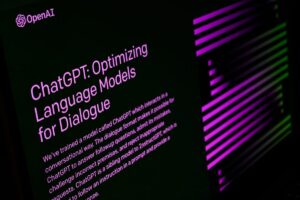Understanding the Confusion Surrounding AI Agents

Understanding the Buzz Around AI Agents
The tech industry is seeing a surge of enthusiasm regarding AI agents, with influential leaders making bold predictions about their impact in the workplace. In recent statements, OpenAI’s CEO Sam Altman suggested that AI agents would "join the workforce" within the year. Similarly, Microsoft’s Satya Nadella claimed these agents could potentially replace certain roles traditionally held by human knowledge workers. Salesforce’s Marc Benioff also expressed ambitions for Salesforce to become a top provider of digital labor through its array of agent-based services.
What Exactly Are AI Agents?
Despite the excitement, industry leaders struggle to define what an AI agent truly is. This ambiguity mirrors other complex terms in AI, like "artificial general intelligence" (AGI) and "multimodal." With everyone offering their unique perspective, the term "agent" risks becoming overloaded and, consequently, confusing to consumers.
According to Ryan Salva, Google’s senior director of product, the industry has overused the term “agent” to the point where it has become almost meaningless. He expressed frustration about how the term is applied across various platforms and organizations.
Varying Definitions and Perspectives
The confusion surrounding AI agents is not new. The diversity in definitions has escalated recently, as various companies approach the concept differently. For example:
OpenAI: It has described agents as “automated systems that can independently accomplish tasks on behalf of users.” However, the company later suggested in developer documentation that agents are primarily "LLMs equipped with instructions and tools." This contradiction showcases the evolving nature of the term across their communications.
Microsoft: Their guidelines differentiate between agents and assistants. According to Microsoft, AI agents are “new apps” designed for an AI-driven world, with specific expertise in performing designated tasks, while assistants focus on broader functions like drafting emails.
Anthropic: This AI lab offers a more nuanced view, defining agents both as fully autonomous systems and as prescriptive implementations that adhere to predefined workflows.
- Salesforce: They encompass a broader definition, categorizing agents as systems that can handle customer inquiries independently. Their framework includes six subclasses of agents, ranging from basic reactive systems to more complex utility-based models.
The Chaos Behind Definitions
The confusion around AI agent definitions stems from multiple factors. As the capabilities of these technologies evolve, so do the interpretations of what constitutes an agent. Recent introductions of agents by OpenAI, Google, and Perplexity showcase a wide range of functionalities, making it challenging to pin down a single definition.
Marketing vs. Technical Clarity
Industry experts like Rich Villars from IDC and Andrew Ng, founder of DeepLearning.ai, note that tech companies have a history of being lenient with definitions, especially in quickly evolving tech areas. Villars pointed out that companies often prioritize their objectives over adhering strictly to technical definitions. Conversely, Ng emphasized that broader marketing efforts have diluted the original meanings of terms like "agents" and "agentic."
Jim Rowan, head of AI for Deloitte, sees this lack of a unified definition as both a potential benefit and a significant hurdle. While flexibility may allow for tailored solutions, it also creates "misaligned expectations" among users, complicating project objectives and outcomes.
Navigating the Ambiguous AI Landscape
The absence of a standardized definition for AI agents can hinder organizations when assessing performance or ensuring consistent results. According to Rowan, a clearer understanding within organizations could help align goals and improve project success.
As the industry continues to innovate, it seems unlikely that a consensus on the term “agent” will emerge anytime soon. The ramifications of such ambiguity remain a central concern for companies striving to navigate the complexities of AI-enabled technologies.






